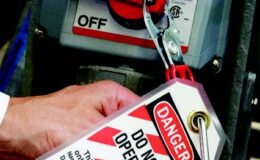By Donna Motley, Vice President of Claims
An injury occurs at your facility. The incident is reported through the proper channels – this could be a report to the immediate Supervisor, Plant Manager, Safety Director, or Human Resource Department. If immediate medical attention is required (i.e. blood is involved, a head injury, EMS needs to be called) the next step would be to make sure the injured employee receives the proper medical attention. Then, notify the MTMIC Claims Department of the incident – even if notification is without benefit of the Form 100 (Employer’s Basic Report of Injury). In an emergent situation, you may not know all the facts at that point in time, but should medical personnel contact our department for some sort of verification or authorization, we would at least be aware of the situation and able to take appropriate measures to manage the pending claim. Following said notification, the employer should then start their investigation as to the facts and circumstances surrounding the incident. If a serious injury has occurred, the Claims Department will also notify your MTMIC Loss Control Consultant, who will contact you and aid in an investigation and/or schedule to do an investigation on our behalf.
However, if an employee reports that an injury/ incident occurred days, weeks or months prior, the first step for the employer would be to obtain a “detailed” description of what the employee alleges to have occurred. The Form 100 is a State mandated form. The information gathered to complete the form should be obtained directly from the employee. If the employer does not agree with the facts provided by the injured employee, the facts as the employer knows them, should be submitted to our department on a separate piece of paper. Yes, we do need to know if there are discrepancies.
In Section III of the Form 100, questions are asked about “how” the injury occurred, “what” was the employee doing prior to the injury, “what” part of the body was affected, “what” object harmed the employee. These questions should be answered by the employee. Answers such as “doing his regular job”, “grinding”, “running machine, or “unknown” or the space being left blank is not acceptable. The reason this is not acceptable is because as a State mandated form, the bulk of the claim is initiated from this form. If body part is listed as “hand”, is that to mean finger, palm, wrist or all three parts? One finger or four fingers? When medical records reflect treatment to the wrist, would that be part of the claim?
Section V of the form is the preparer’s signature – that signature “certifies” that a copy of the Form 100 was given to the employee. When a Form 100 is blank, or is completed with minimal information or “unknown”, at the time of trial, the employee is then able to change the story or facts of the incident to suit their needs. They can say anything they want and what proof would we have to the contrary? As litigation takes between 18 and 24 months to complete, maybe the employee truly does not remember exactly what transpired. The courts tend to favor the injured worker, but the magistrate rarely deviates from the facts listed on the Form 100. If the facts are printed on paper at the time of the injury, and the employee is given a copy of the form at that time, you avoid trying a case based on “he said, she said”. If the employer can further back up the facts listed on the Form 100 with an accident investigation report, Supervisor’s report of the incident, written statement from the injured worker and witness statements – it would be pretty difficult for the story to change and be believable.
It is not that we don’t trust your employee. All claims are handled pursuant to the Michigan Workers’ Compensation Act. Following the Act provides the best possible position should litigation occur, and mitigate the insured’s exposure. Our department is always available to answer your questions on the best way to proceed in processing a claim.






